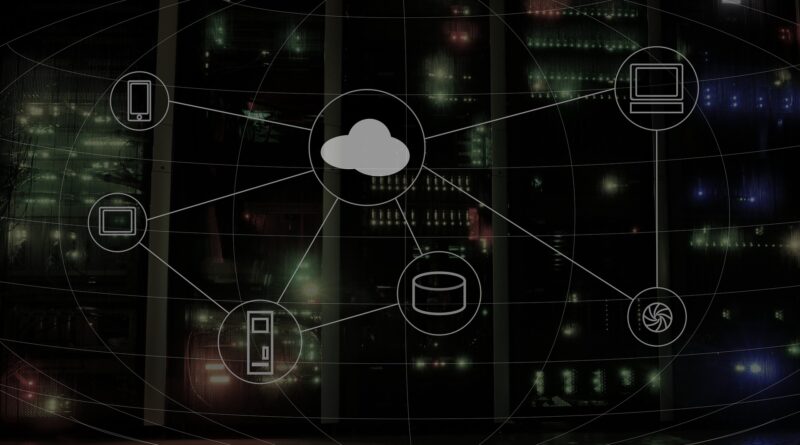What Are the Different Types of Cloud Computing Models?
Introduction
Cloud computing has become an integral part of modern business infrastructure, offering scalable, flexible, and cost-efficient solutions for computing and storage needs. However, understanding cloud computing models is essential to making the right choice for your business or personal needs. The cloud is not a one-size-fits-all solution, and it comes in different types and service models to cater to varying requirements. In this article, we will explore the different types of cloud computing models, their characteristics, and how they can be used to meet specific goals.
1. Public Cloud
The public cloud is perhaps the most commonly known and used cloud computing model. In a public cloud, computing resources such as servers, storage, and applications are owned and operated by third-party providers and are made available to the public over the internet. This model is typically used by small and medium-sized businesses, as well as individuals, because of its cost-effectiveness and ease of use.
Characteristics of Public Cloud:
- Multi-Tenant Architecture: In a public cloud, resources like servers and storage are shared by multiple customers (tenants). Each customer’s data and applications are isolated from others, ensuring privacy and security.
- Scalability and Flexibility: Public cloud services allow users to scale resources up or down based on their needs, making it highly flexible. Customers only pay for the resources they use.
- Access via Internet: All resources are accessible through the internet, making the public cloud ideal for businesses and individuals who need access to data and applications from anywhere.
Examples of Public Cloud Providers:
- Amazon Web Services (AWS)
- Microsoft Azure
- Google Cloud Platform (GCP)
- IBM Cloud
When to Use Public Cloud:
- You need cost-effective solutions without the hassle of maintaining infrastructure.
- Your business has variable workloads and requires flexibility.
- You don’t need the high level of control that a private cloud might offer.
2. Private Cloud
A private cloud is a computing environment that is used exclusively by one organization. It can be hosted either on-premises (within the organization’s own data center) or by a third-party provider. Unlike public cloud models, the private cloud is dedicated to a single business or entity, which provides greater control, security, and customization.
Characteristics of Private Cloud:
- Single-Tenant Architecture: Resources are not shared with any other organization, providing a higher level of security and control.
- Customization and Flexibility: Private cloud environments can be customized to meet specific business requirements, such as compliance needs or specialized software.
- Enhanced Security: Since the private cloud is only accessible to one organization, it provides a higher level of control over data security, making it ideal for businesses with sensitive data or regulatory requirements.
When to Use Private Cloud:
- You have strict compliance and security requirements.
- Your organization needs customization and control over its cloud environment.
- Your business requires predictable performance and cannot afford downtime.
3. Hybrid Cloud
A hybrid cloud combines elements of both public and private clouds, allowing data and applications to be shared between them. This model provides businesses with greater flexibility, enabling them to take advantage of the cost savings of a public cloud while maintaining control over sensitive workloads in a private cloud.
Characteristics of Hybrid Cloud:
- Integration of Public and Private Clouds: A hybrid cloud allows for the seamless transfer of data and applications between public and private environments.
- Workload Optimization: Businesses can choose to run specific applications on the public cloud for scalability and lower cost while keeping sensitive or critical workloads in the private cloud for greater security and control.
- Flexibility: Hybrid clouds enable businesses to scale resources easily and quickly while maintaining control over certain aspects of their infrastructure.
Examples of Hybrid Cloud Providers:
- Microsoft Azure Stack
- Google Anthos
- AWS Outposts
When to Use Hybrid Cloud:
- Your organization needs to manage sensitive data in a private cloud while still leveraging public cloud for less sensitive workloads.
- You want the flexibility to scale resources but require the ability to keep some services on-premises.
- You need a balance between cost-effectiveness and security.
4. Community Cloud
A community cloud is a model where the cloud infrastructure is shared by several organizations with similar interests, such as the same industry or compliance requirements. These organizations collaborate to share resources while maintaining control over their data and applications. Community clouds are typically managed and maintained by a third-party provider, although they can also be managed by the organizations themselves.
Characteristics of Community Cloud:
- Shared Infrastructure: The cloud infrastructure is shared by multiple organizations within the same community, which helps reduce costs.
- Collaborative Use: It is ideal for organizations that require collaborative efforts on shared projects, research, or industry-specific workloads.
- Security and Compliance: Community clouds can provide a level of security and compliance suited to industries with regulatory requirements, such as healthcare, government, or finance.
When to Use Community Cloud:
- Your business operates within a specific industry (e.g., healthcare, finance) and has shared compliance needs.
- You want to share resources with other organizations in the same field but still maintain some control over security and privacy.
- Your business has limited resources and benefits from shared infrastructure with similar organizations.
5. Multi-Cloud
A multi-cloud model refers to the use of multiple cloud services from different providers, often combining public and private cloud services. The goal of multi-cloud is to avoid vendor lock-in and increase the resilience and flexibility of an organization’s infrastructure.
Characteristics of Multi-Cloud:
- Vendor Independence: Businesses can avoid relying on a single cloud provider, which can reduce the risk of downtime or service outages that affect all resources.
- Optimized Workloads: Businesses can choose the best cloud provider for each specific workload or application. For example, one provider might offer better AI capabilities, while another may be better for storage.
- Improved Redundancy and Reliability: By using multiple providers, businesses can ensure that if one provider experiences issues, they can shift workloads to another provider.
When to Use Multi-Cloud:
- You want to avoid vendor lock-in and use the best services from multiple providers.
- Your business requires resilience and the ability to shift workloads between cloud providers.
- You need to balance cost, performance, and security by selecting different providers for different needs.
6. Function as a Service (FaaS)
Function as a Service (FaaS), also known as serverless computing, is a cloud service model where developers can run code in response to events without managing the underlying infrastructure. This is an event-driven architecture where the cloud provider automatically handles the execution of functions or microservices.
Characteristics of FaaS:
- No Server Management: Developers can focus on writing code and responding to events rather than managing servers or infrastructure.
- Scalability: The platform automatically scales to handle the number of requests, so businesses don’t need to worry about over-provisioning or under-provisioning resources.
- Cost-Effective: You only pay for the execution time of the code rather than paying for the entire server, which can result in cost savings.
When to Use FaaS:
- You need a cost-effective solution for running event-driven functions.
- Your application relies on microservices and doesn’t require continuous server operation.
- You want to focus purely on writing code rather than managing infrastructure.
Conclusion
Understanding the different cloud computing models is essential for businesses and individuals to make informed decisions about which model best fits their needs. Each model—whether it’s public, private, hybrid, community, multi-cloud, or FaaS—offers unique advantages depending on the use case. By evaluating the specific requirements of security, cost, flexibility, and scalability, businesses can choose the cloud model that will provide the most value and support their growth.
As the cloud computing landscape continues to evolve, staying informed about the various cloud models will ensure that businesses and individuals can make the most of this transformative technology.

